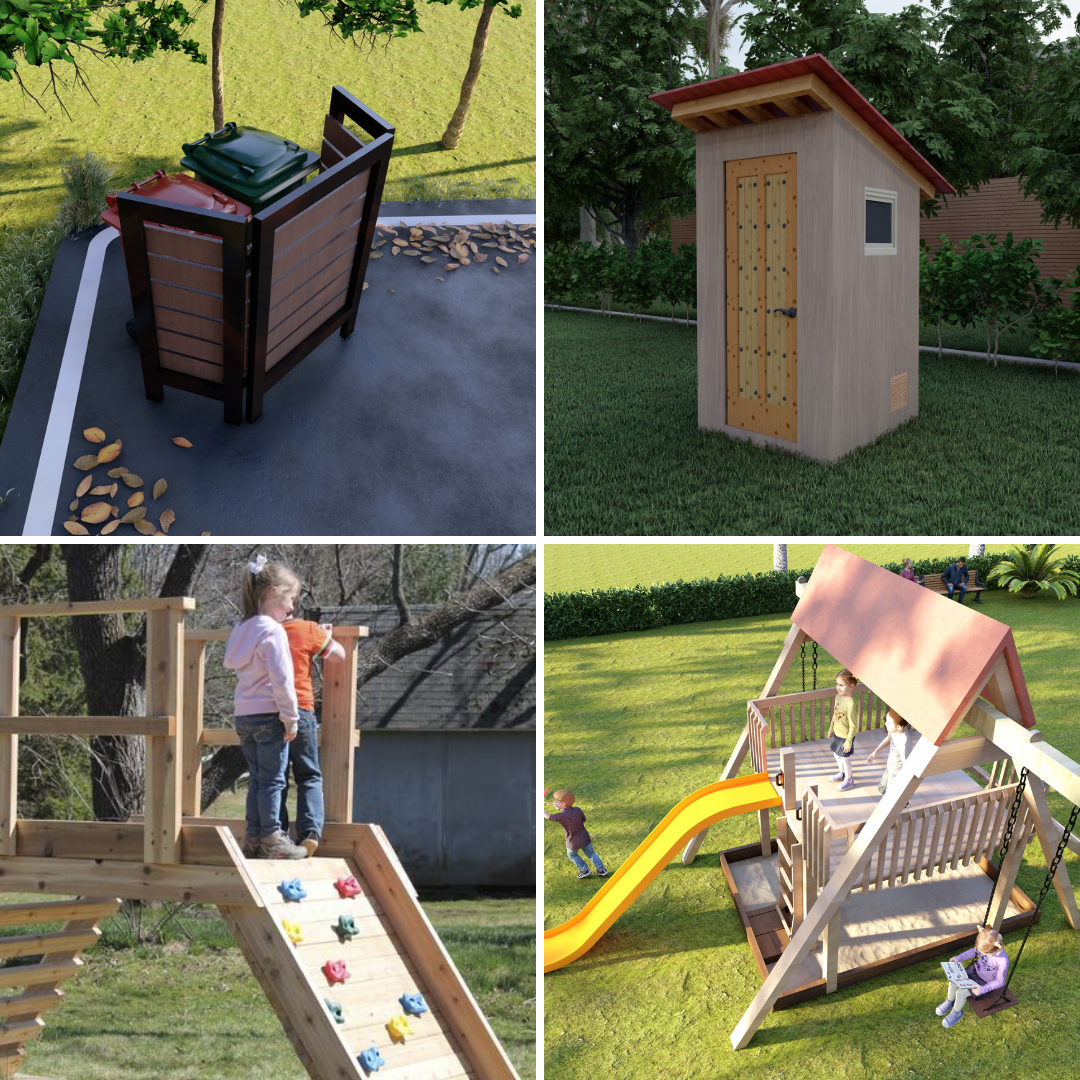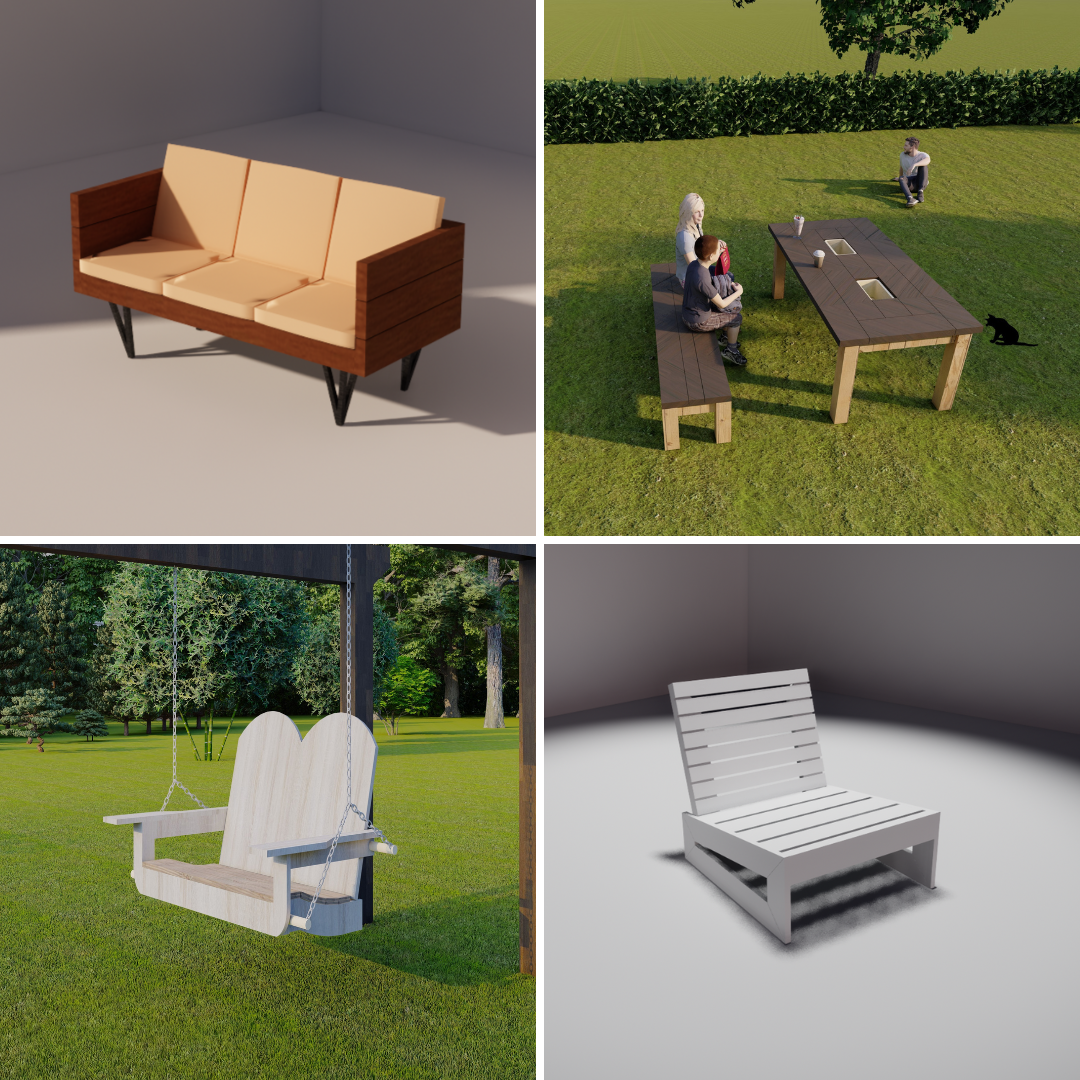
Cost Breakdown: Building a Tiny Home vs. Buying a Tiny Home
Share
Tiny homes have gained popularity as a practical, affordable, and eco-friendly housing option. Whether you’re downsizing for simplicity or embracing minimalism, the first major decision you’ll face is whether to build your tiny home from scratch or purchase a pre-built model. Both options come with distinct advantages, challenges, and financial implications. If you’re considering the DIY route, our Tiny Home & Cabin Plans offer customizable designs to guide your journey.
Curious about the financial aspects of constructing a tiny home? This comprehensive guide on How Much Does a Tiny Home Cost to Build in 2024? details the key expenses and considerations, helping you determine if building aligns with your vision and budget. Below, we’ll explore the costs of both building and buying, highlighting what you’re paying for and how to make the best decision for your needs.
1. Building a Tiny Home: Expenses and Key Considerations
Building your own tiny home can be an exciting and rewarding experience. It allows for complete customization and can save money if you’re willing to put in the work. However, it requires careful planning, time, and a realistic budget.
Material CostsThe materials you choose will largely determine the cost of your build. The average material costs for a 200- to 300-square-foot tiny home might include:
- Lumber and framing: $3,000–$7,000, depending on the size and quality.
- Insulation: $500–$2,500, with eco-friendly options like wool or cork costing more.
- Roofing materials: $1,000–$4,000, varying by type (metal, asphalt, etc.).
- Windows and doors: $2,000–$6,000 for energy-efficient options.
- Electrical and plumbing systems: $3,500–$8,500, based on complexity.
Sourcing reclaimed or second-hand materials can significantly lower costs while adding character to your tiny home.
Labor CostsIf you have construction skills, you can save tens of thousands of dollars by taking the DIY approach. For those less experienced, hiring professionals ensures quality and compliance with building codes. Labor costs typically range from $50 to $150 per hour, depending on your location and the expertise required.
Permits and LandDepending on where you plan to build, you may need to purchase land and secure permits. Costs for land vary widely, while permits and inspections can add another $500–$5,000 to your budget.
Additional ExpensesDon’t forget about hidden or unexpected costs, such as:
- Tool rentals or purchases.
- Utility hookups, if applicable.
- Transportation costs for materials.
Building a tiny home can cost as little as $20,000 for a basic DIY model or upwards of $100,000 for a professionally built, customized design. The average self-built tiny home falls between $30,000 and $60,000.
2. Buying a Tiny Home: Costs and Benefits
Purchasing a pre-built tiny home offers convenience and peace of mind, though it often comes with a higher price tag. Here’s what you’re paying for when you choose this route:
Base PricesThe cost of buying a tiny home depends on factors such as size, materials, and the builder’s reputation. Standard models from reputable companies range from $50,000 to $100,000. Luxury models with high-end finishes, off-grid capabilities, and smart home features can cost $150,000 or more.
Customization FeesMany manufacturers offer customization options, allowing you to adjust layouts, finishes, and features to suit your preferences. Customizations can add anywhere from $10,000 to $30,000 or more to the base price.
Delivery CostsUnless you’re purchasing a tiny home on wheels and plan to pick it up yourself, delivery fees are an additional expense. Depending on the distance and size of your home, delivery costs range from $1,000 to $10,000.
Financing OptionsOne major advantage of buying is access to financing options. Many builders partner with lenders to offer payment plans, allowing buyers to spread out costs over time. While convenient, interest rates can increase the overall expense.
Turnkey ConvenienceBuying a tiny home means it’s ready for use as soon as it’s delivered. This is ideal for those who don’t have the time, skills, or inclination to take on a building project.
On average, purchasing a tiny home will cost more than building one, but it eliminates many of the challenges associated with DIY construction.
3. Building vs. Buying: Comparing Costs and Value
Choosing between building and buying depends on your skills, budget, and priorities. Let’s compare the key differences:
Cost Efficiency- Building: Offers potential savings, especially if you use reclaimed materials and do much of the labor yourself. However, mistakes can lead to costly fixes.
- Buying: Comes with a higher upfront cost but ensures professional construction and eliminates the risk of DIY errors.
- Building: Requires several months to a year of dedicated time, depending on the complexity of the project and your schedule.
- Buying: Provides instant gratification, with many homes ready for delivery in weeks or months.
- Building: Gives you complete creative control over every aspect of your home.
- Buying: Allows for limited customization, though some builders offer a range of options to personalize your space.
Both options can offer excellent long-term value, particularly if your tiny home includes sustainable features like solar panels or energy-efficient systems. A well-built home—whether DIY or purchased—can maintain or even increase its resale value.
Lifestyle ConsiderationsBuilding a tiny home is a hands-on experience that suits those who enjoy crafting and problem-solving. Buying, on the other hand, is ideal for those who prioritize convenience and professional results.
Final Thoughts
Whether you choose to build or buy, owning a tiny home is an investment in freedom, sustainability, and intentional living. Building offers the satisfaction of creating a custom home at potentially lower costs, while buying provides convenience and professional quality.
To begin your tiny home journey, explore our plans below for expertly designed layouts tailored to various budgets and lifestyles. With the right planning and resources, you can create a tiny home that aligns with your dreams, whether you hammer every nail yourself or rely on the expertise of a trusted builder.






